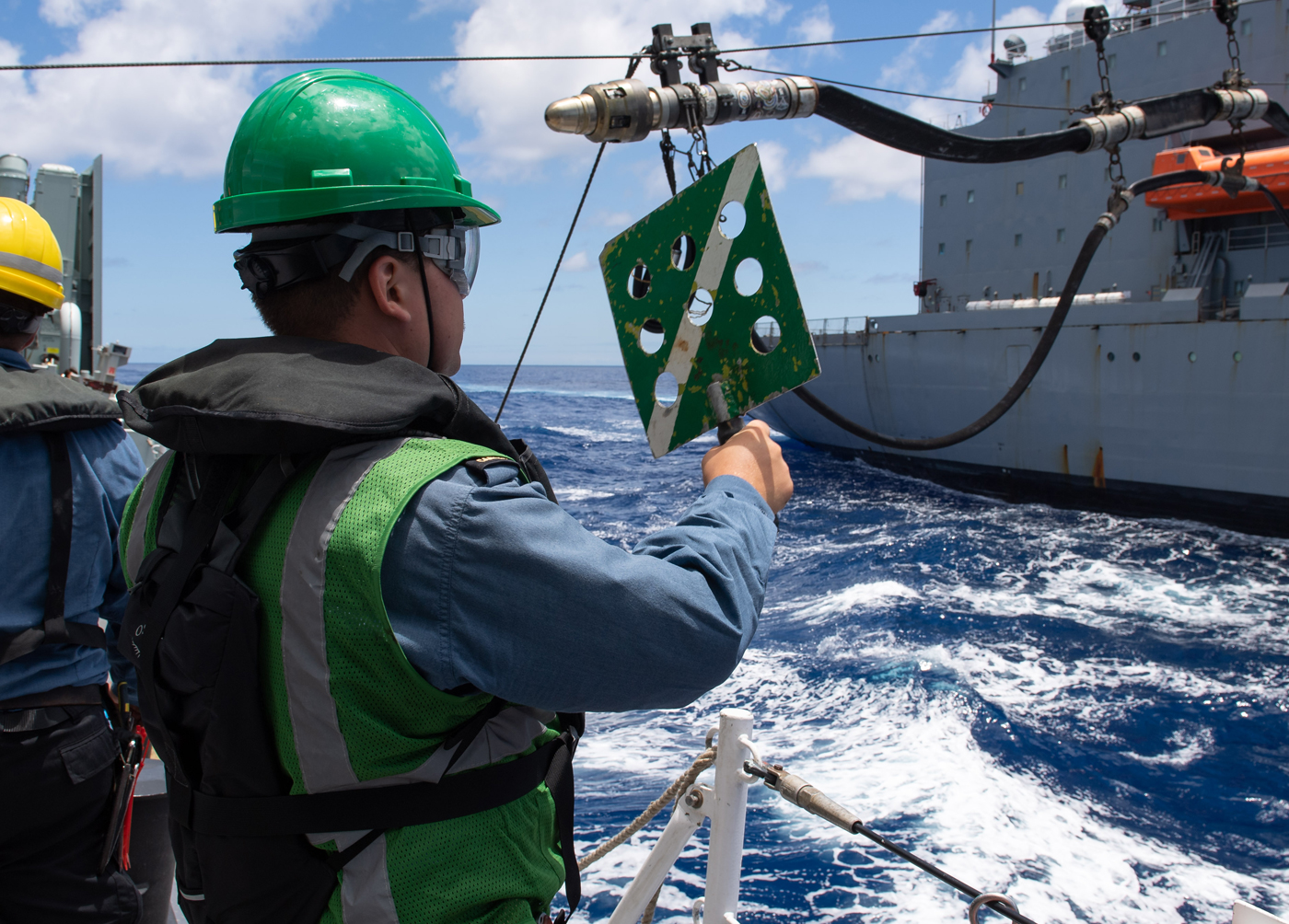Readiness training at RIMPAC
By Lookout on Sep 02, 2020 with Comments 0

Ordinary Seaman Kilian Soch signals to USS Henry J. Kaiser during a replenishment-at-sea off the coast of the Hawaiian Islands.
Capt Chelsea Dubeau, HMCS Winnipeg Public Affairs Officer ~
The Replenishment-at-Sea evolution, or RAS, is probably one of the more complex ship’s evolutions that occurs. During a RAS, fuel and stores are passed from one ship to another while underway and requires that both ships get very close to one another.
Uncomfortably close, by normal standards.
Ordinarily ships like to keep a certain distance between them to avoid collision, but a RAS is up-close-and-personal, out of necessity. The lines connecting the ships have thousands of pounds of tension on them. One miscommunication, one malfunction, one mistake, and the consequences could be dire. A RAS requires tricky manoeuvering, absolute focus, and impeccable seamanship; it’s a whole-of-ship evolution, from the bridge team to the sailors running the lines.
So, when the crew of HMCS Winnipeg learned they’d be doing a RAS as part of Intermediate Multi-Ship Readiness Training (IMSRT) and RIMPAC, the feeling could only be described as “trepidation”.
While a RAS is a regular part of readiness training, RIMPAC presented a higher-stakes platform on which to conduct it. Imagine the pressure. RIMPAC is the world’s largest maritime exercise, and the eyes of the world are on the partner nations participating. If something goes wrong, the consequences run the gamut.
“I was a little bit worried, because for me the last time I [conducted a RAS] was on Winnipeg in 2009,” says Chief Petty Officer Second Class Stephan Melançon, Chief Boatswain Mate. “And most of my people are junior, so they’ve never [conducted a RAS] before. So, it was a first for most.”
But just because it was a first for most, and just because it was the first RAS for the ship in three years, doesn’t mean the crew wasn’t prepared. The training that goes into seamanship and bridge evolutions is intensive, and extensive.
“As part of the training, there was a host of lectures and layouts to go through,” says Lieutenant (N) Tony Boston, Deck Officer. “There’s also a simulator at the base in Esquimalt. So, we had the team go through that, just practicing the sequence of events. That builds into coming together and doing it at sea.”
It’s a whole ship’s effort to do it, not just the people on deck.
“The bridge team has to get the ship into the right position at the right time, and then drive a pretty delicate approach to get the ship alongside appropriately and then do some station-keeping. On top of that, down below the Marine Systems Engineering personnel have to be ready to configure all the valves to take on fuel. There’s an order in which it has to be done. It’s not like filling up your car,” he said.
Finally the big day arrived. On Aug.17, on the first day of RIMPAC and in the midst of its IMSRT program, Winnipeg conducted a RAS with supply ship USNS Henry J. Kaiser.
“It was perfection,” said CPO2 Melançon. “It was like the team had been conducting RAS for years.”
“It was pretty cool,” added Lt(N) Boston. “We had an American ship gassing up a Canadian ship, and an Aussie ship nearby. It really showcased the RIMPAC slogan – capable, adaptive, partners.”
The crew conducted its second successful RAS with USNS Henry J. Kaiser on Aug. 22 as part of RIMPAC 2020.
––––
Filed Under: Top Stories
About the Author:





